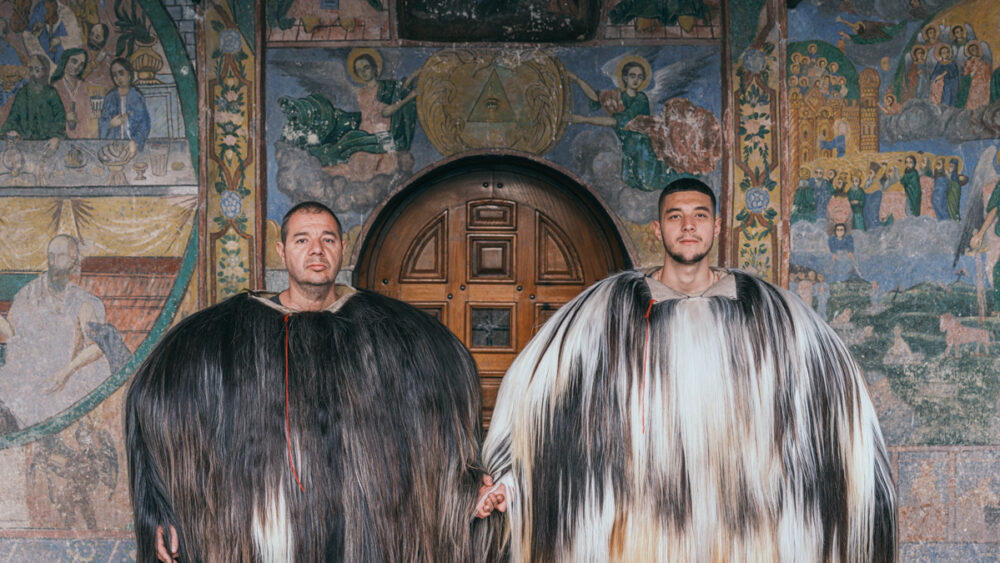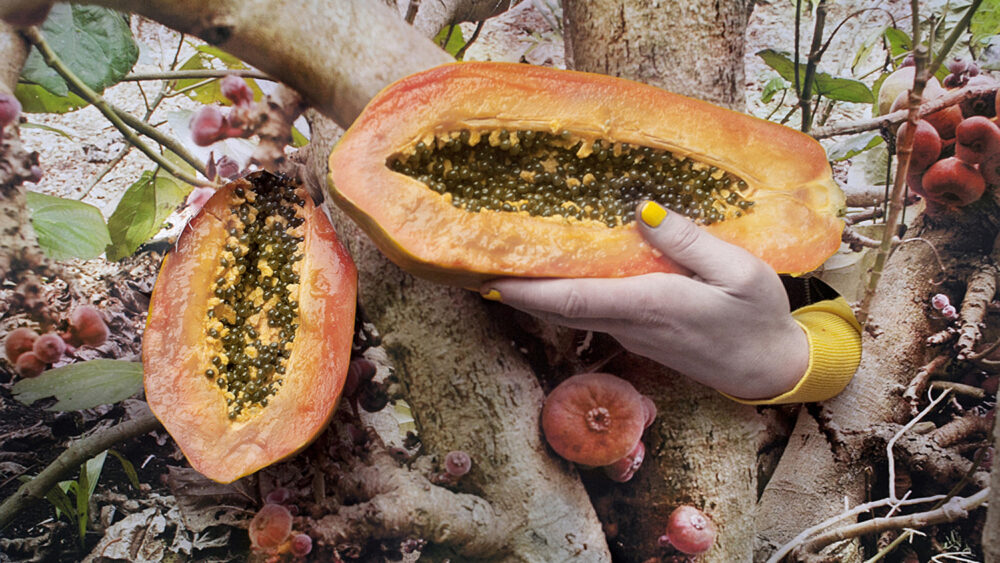To diversify the art landscape. Interview with A:D: Curatorial in Berlin
Using their previous experience and connections, two young curators Christy Woody (American, 1987) and Maria Isserlis (Ukrainian, 1986) are running an arts space A:D: Curatorial in Berlin with a focus on creating a platform for today’s innovative artists to be heard in a non-commercial environment. A:D: Curatorial is a gallery that does not sell works of art but gives grants to the artists to create new works. It is led by curators who stand for artists’ growth instead of taking a sales commission from the deals. The curators explain how such an art space survives and how it has found its niche at the time of COVID and warfare.
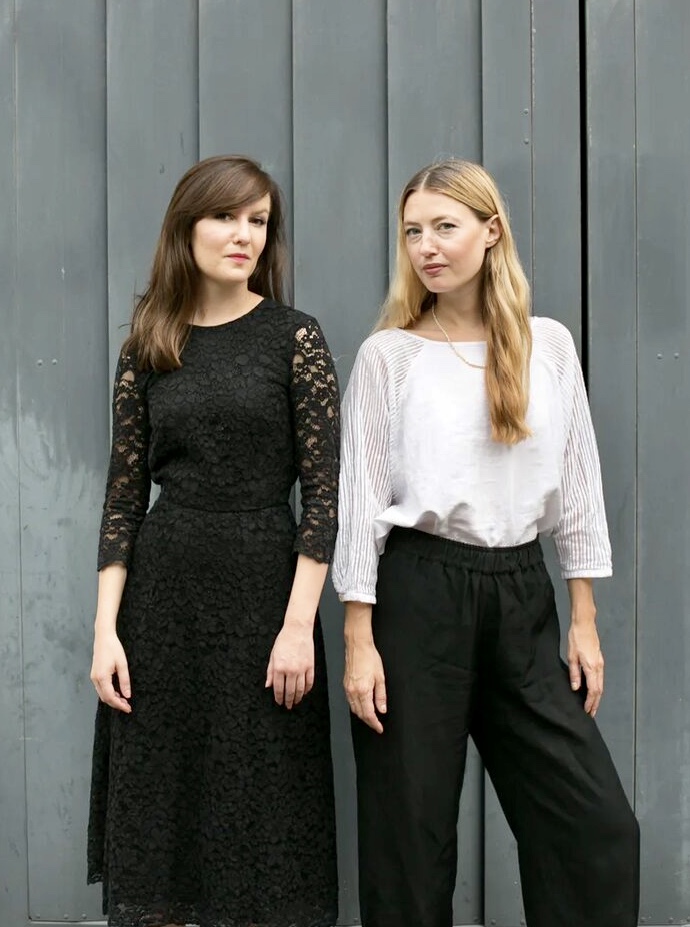
How did you both meet and how did the idea to create a new arts space emerge?
Christy: Maria and I met through a mutual friend in Berlin. At that point, I had just finished a job. I was working for Christie’s which is an auction house in New York, and Maria was just finishing working for Manifesta. We were both a little burnt out at this point in our careers and we also were both interested in doing something smaller, something where we’re actually working with artists, something that’s non-profit, and just exploring what it would be like to run our own gallery and be our own bosses. We started up a small place called Aperto Raum but then we wanted to do bigger shows and expand and do things that could be defined as an East-West dialogue, since Maria is from Ukraine and I am from the US. And we really wanted to help younger artists who just needed space and more promotion, as well as funding to create works. So, we came up with A:D: Curatorial. But then COVID unfortunately happened, that threw a wrench, pausing the whole project for two years. In Berlin, especially, the lock downs were very strict. At the end of the last year, we found our current place, signed a contract and moved in March of this year. We started in 2017, we had a couple of good years, just to lay the groundwork before it happened. But I think COVID was also good timing for us because it was at this moment where we were looking to professionalize a little bit more from just being an underground Berlin. It gave us the time to rethink our business plan and strategy, and financing over those couple of years, which was good.
What are your backgrounds?
Maria: I have a degree in Art History and Media Science. I have worked for Manifesta Biennial, curated and produced big scale international exhibition projects and now I am a curator at the Staatliche Kunstsammlungen Dresden.
Christy: I studied art history and then I did a graduate school in the history of design at the Royal College of Art in London. I worked at Christie’s for about five years.
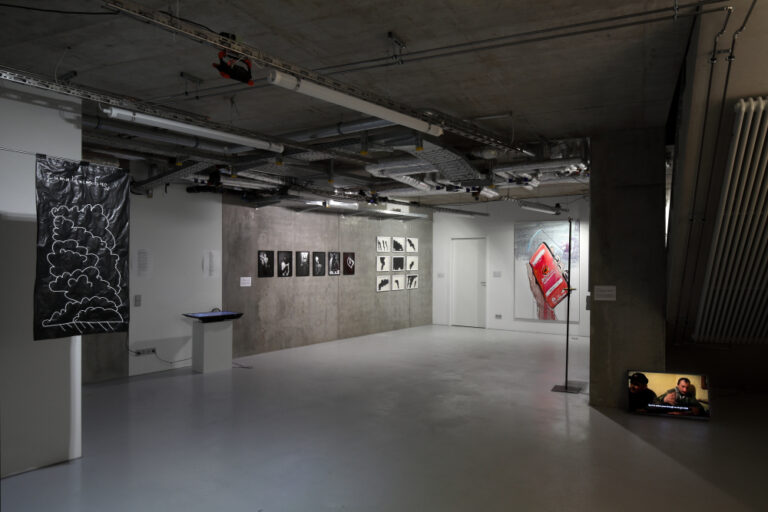
How do you choose artists to work with?
Christy: We search for artists that are very strong conceptually. We need people that have their own voice, that have a resume, artists who have already exhibited internationally, potentially, in whatever their field is, but it has to be this marriage of a strong concept and also great execution of the piece.
You also commission new works. How is it done and what are they for?
Maria: It was crucial to put it as one of our main goals. We are entirely a non-commercial entity. We try to raise funds for everything that we’re doing. The idea of new commissions is always to give the artists an opportunity to create a new work without having the pressure to actually be commercially successful with it. Sometimes it’s a long process, sometimes it’s a very short process, it really depends on the artist and their own artistic practices. Sometimes we have known the artist for several years and then we come up with a project, and sometimes it is just like the artist comes inside the space and realizes he or she wants to do something particular for one wall. It’s very different and it depends a lot on the artist. We are always trying to get an additional budget to allow the artists to work the way they want. In our exhibitions, we’re trying to make a mix between the existing works, and something newly produced for the particular show, and it’s important to have that additional element to each exhibition. We have the space and then we apply together with the artist for a grant but the work produced belongs to the artist. We also don’t have a pressure to sell it.
Has your work somehow changed since the war in Ukraine started?
Maria: Yes, the work has changed drastically. I have a full-time job as a curator at the museum in Dresden, so A:D: Curatorial is a passion-driven project on the side. When the war started, I immediately wanted to do something to respond and my colleagues also supported me in that attempt, but a museum is a very slow institution, as you can imagine. So, of course, having a platform like A:D: Curatorial made it easier to do something quicker, which is relevant for the topic. But on the other hand, it was important not to do it too quick in the sense not to do something reactionary but to really make the first show with Ukrainian artists more curated and more thought-through. We got the new space right after the war started. So, it was clear we will also use the space to highlight Ukrainian artists, art and culture but we started with a show that we were preparing already before COVID started to introduce the new space to the Berlin public. Therefore, while Christy was working on the first show I had time to work with Ukrainian artists and Ukrainian curators on the second show, to make it more relevant and to have time to apply for funds. We got support and instead of one exhibition we actually did two, which were running in parallel. One of them was showing an archive of important Ukrainian artists. Then we had 17 newly produced works from the beginning of the full-scale invasion. We brought 13 artists to Berlin. The majority of them were male artists who usually were not allowed to leave Ukraine, but thanks to that exhibition, we could issue them invitations, and they could physically come. It also became a political opportunity for us to do something to help and we got a lot of attention with the exhibition after it went partly to Folkwang museum, partly to a museum in Lodz, in Poland. It raised a lot of awareness and was running throughout the summer. It was important also for me personally to have this opportunity. Then I had a few weeks gap between that and the show with Ahmet Öğüt. I met another Ukrainian curator, and I invited her to do another exhibition for A:D: Curatorial with Ukrainian artists who were in Berlin. The first exhibition was very important to show the perspectives of those Ukrainians who decided to stay in Ukraine. Western curators sometimes just take what is very quick to do, they just approach the Ukrainian artists who are local and organise an exhibition. I’m also giving the space for two workshops, which are produced with two other curators and artists, and made for refugees from Ukraine of a particular age between 13 and 21. We try to use our platform as much as possible for all kinds of initiatives which we find interesting and meaningful, as well as initiating change.

How would you describe Berlin’s art scene?
Maria: Berlin’s art scene is very diverse. It has a range from high-end institutions and blue chip galleries, up to tiny art projects, which are somewhere really far out on the outskirts and self-run by non-profit organizations. It seems that Berlin has everything. It has like 300 galleries but Berlin doesn’t have much money. But still, it has that many commercial galleries, which I always find quite striking because I have no idea how they find enough collectors to sustain themselves. To my knowledge, collectors are usually coming from somewhere else to Berlin. I felt that with A:D: Curatorial we’re trying to fill a certain gap, to build a bridge between this high-end art world and the really emerging artists, who do not have access to galleries or institutions yet, but which we find extremely important to present in a more high-end space. We were in Mitte before, next to a very important, private collection of Erika Hoffmann. She was the one who gave us the space which we were running for the first few years. The idea was to be like a commercial gallery in the sense of the quality of production and more like an institution in the sense of curation, to give a platform to artists from the post-Soviet, Eastern Europe, or emerging artists from Berlin, who are not necessarily on the obvious list of curators and institutions to be a bridge and then to be admitted. Non-profit spaces are not in Mitte anymore, they usually cannot afford to be in the same space we have right now. It’s too expensive to even rent those kinds of spaces. We use our opportunity and connections to create those kinds of platforms, which will give a little bit of both worlds. The problem is that Berlin is getting more and more gentrified. People, the non-profit organisations just cannot hold their ground, that’s why they are moving out to the outskirts but then the curators are often too lazy to go there. This is where I feel we try to fill the gap.
How can you afford it?
Maria: Our first space in Mitte was given to us free of charge. We only had running costs. For the second one we received a grant from a US foundation, which was directly connected to the rent of the space. It’s not fully impossible but it is getting harder.
Have you had any success stories?
Maria: Obviously! For instance, this Ukrainian artists’ show where part of it went to another museum, some of the works got sold. It’s great for them because they use all the money to support Ukraine. And now the exhibition of Ahmet Öğüt! It went all through the press, and people who visited said it’s like a museum quality exhibition. For us, it’s really important to get that kind of response and this is what we aspire to. Ahmet is one of the most successful artists, represented in major biennials and art institutions all over the world. He had his last show in the KOW gallery, but since then he had never done a solo exhibition here and he deliberately decided not to be represented by any commercial gallery. He successfully operates between different systems. That’s why we are kind of a perfect fit for each other in that sense. We are working with him because there is also some kind of institutional blindness towards certain artists who are not necessarily German, white and belong to a certain Berlin art scene. We feel it is also very important to work not against it, but to diversify the art landscape of Berlin.
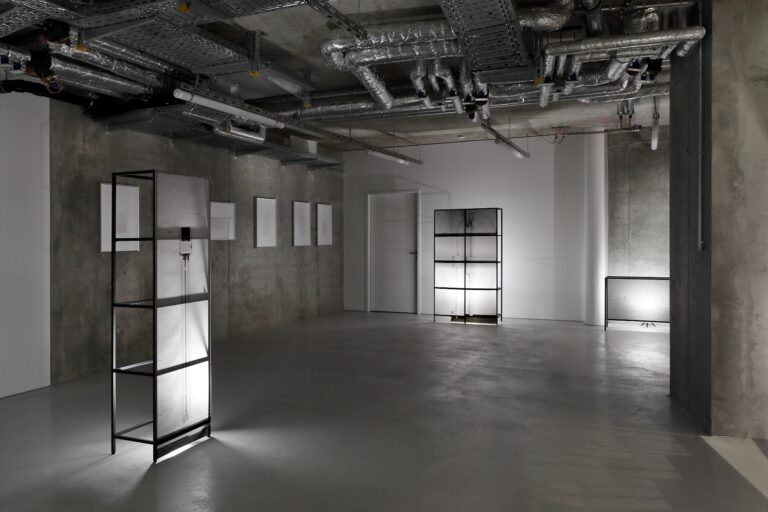
Isn’t the art world too pretentious? If an artist who has made the same, appreciated artwork can’t sell it unless it is in a prestigious surrounding? Is it possible to move from one art circle to a different one?
Maria: I think the art world contains many different parallel worlds, many big and small circles, which sometimes can intertwine, but usually are very remote and disconnected from each other. There is no ideal art world since it forces artists and art professionals to work a lot under precarious conditions. The existing systems are usually beneficial to a minority and wealth is neither equally nor fairly distributed. I don’t have a perfect answer on how to change the system, but we need to address the issues and try to experiment with alternative formats in order to create new solutions. The last Documenta was trying to offer some strategies and solutions but in Germany this discussion didn’t take place because of the Antisemitism debates, which dominated the German press.
Does an artist today need to fulfil certain parameters and if yes, what are they?
Christy: I feel like that is a good question to ask the artists themselves because I think a lot of artists create work specifically either for an exhibition or for the commercial side of the art world. Having worked with artists for so many years and myself to having worked at a place like Christie’s, there’s a huge divide between the commercial side of the art world and the non-commercial side of the art world. For artists to be successful in today’s market, they do have to be aware that they have to make certain types of pieces in order to be financially successful which in turn will help them create other pieces that are not going to have any financial impact for them, but will be in big museums and will be on public display, works that are maybe going to say much more about what they want to say, as an artist. Yet, those pieces are not commercially viable, meaning they can’t sell them to a collector. So, artists are very often caught between the pieces they want to make, that mean something and pieces they kind of have to make for the commercial value. We are lucky as a non-commercial gallery. We don’t sell, that’s not our job. If somebody wants to acquire a piece from our show, they buy it directly from the artist and they make the entire sale. We don’t take a percentage out of the artists cut, which we very firmly stand behind. Berlin really enables you to show much more experimental pieces. The art scene in London or New York where most of the commercial scene is based is looking for a type of art that is much more appealing to the high-end collectors.
Maria: A lot depends on the background of the artist, but, for me, a good artist needs to know a lot about other arts and artists and just be curious and keep on exploring and see and connect with others and be a part of community, because, out of my experience, a lot of things are happening through a certain community, so it’s really important to find your own crowd in which you feel welcomed and where you can develop your own artistic voice. Be supportive but also be supported. I see in Berlin that it is really hard to be on the roll. I hope that the art world will change because the resources are getting less and less. We should and we need to support each other and also for artists, there should be a shift to working more together. That doesn’t mean that only the collective approach should exist but in terms of moving around I feel like this is really important. This is a tendency I see in a younger generation, which I find really inspiring, and I hope that this is the direction where we will develop.

Have you worked with the still and moving image projects? Are there any interesting authors that you have discovered through A:D: Curatorial?
Christy: We have worked with a French artist Matthieu Martin. This was our big closing show “Autopia” before COVID in our old space. It was a film that he shot in Russia about the collaboration between Ford Motors, the American car company and the Soviet Union, when they were starting to make their own cars and assembly lines. We have also worked with Polish artist Martyna Poznańska. She has done a series of short films that she shot in the forest in Poland. She really works conceptually on the theme of environmental change and is looking for the similarity between the human body and the body of the forest, exploring the connection that human beings have with the natural forest environment and how we are both co-dependent and our lives are intertwined.
Would you say photography is the least interesting art form?
Christy: In the midst of this, we have had photography alongside of the moving image projects that these artists have done, it goes hand in hand with the moving image projects. We’re really not focused on one medium in particular, we’re much more interested in the concept and the project that the artist is working on and usually, most of the artists we work with, they don’t work with just one medium. We also had a big installation piece that was photography, with a Croatian artist Viktor Popovic, where he had shot our old space that he printed on screens and lit them from behind and created this beautiful installation piece.
Maria: No, because I see photography as one of the art mediums, which can be used the same as painting, installation etc. The quality of work depends on the quality of the idea and artistic vision and not on the medium. There are brilliant artists who mainly use photography as a medium for their conceptual work, like Boris Mikhailov, Wolfgang Tillmans or Nan Golding.
What are the future plans for A:D: Curatorial?
Christy: For us, our gallery is a Moveable Feast, something that we can morph and that we can change with the times and I think in the last few years, with everything going on in the world, it has just installed on us this sense that we need to be flexible, and we need to be able to change directions. I think it’s necessary for us because we want to remain relevant.

